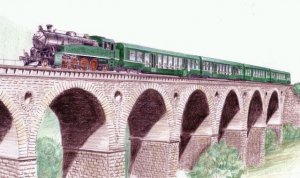Under a 'standard' steam design, 80-120 MPH, for the same reason as fuel burning steam locos. There is a practicle limit to how much speed you can get by pushing back and forth on a large piece of iron or steel.That would be really cool to see though.
Can you imagine how fast a nuke powered train could move?
Using a steam turbine, and possibly electricly coupled, 80-120 MPH, unless you want to lay specialized high speed track. Then you can go as fast as you want. Which still doesn't make a lot of sence, because if you're laying specialized track, you may as well just go electric and be REALLY green.
*edit*
I forgot to mention, the degree of efficiency you can get out of different set-ups, (assuming you also meet power/unit requirements) quickly becomes more of an engineering project than anything. Both steam and diesel are heat engines, relying on the application of heat to cause expansion or pressure, which can then be used as a motive force.
In theory, steam can be more efficient, as that pressure is maintained, and used in the pistons only when ready for it, and can be re-used in a mallet design. In practice though, diesel usually wins out because pretty much all of the heat is used to expand the gasses in the cylinder and gain useful work. Steams radiate a tremendous amount of heat from thier boilers, and lose a lot of heat in the exhaust gasses.
Back to a strictly engineering problem, One could build a steam engine with considerable insulation around the boiler, superheating, and use the last run of the exhaust gasses to preheat the water fed into the boiler. Then use this in a mainline application, where the job is to move at X speed from point A to point B, so the engine can be very well designed for that one speed application. In the end though, it isn't as practicle as building diesels which can also be purpose built for the same kind of efficiency, and still maintain more flexibility in roles.


